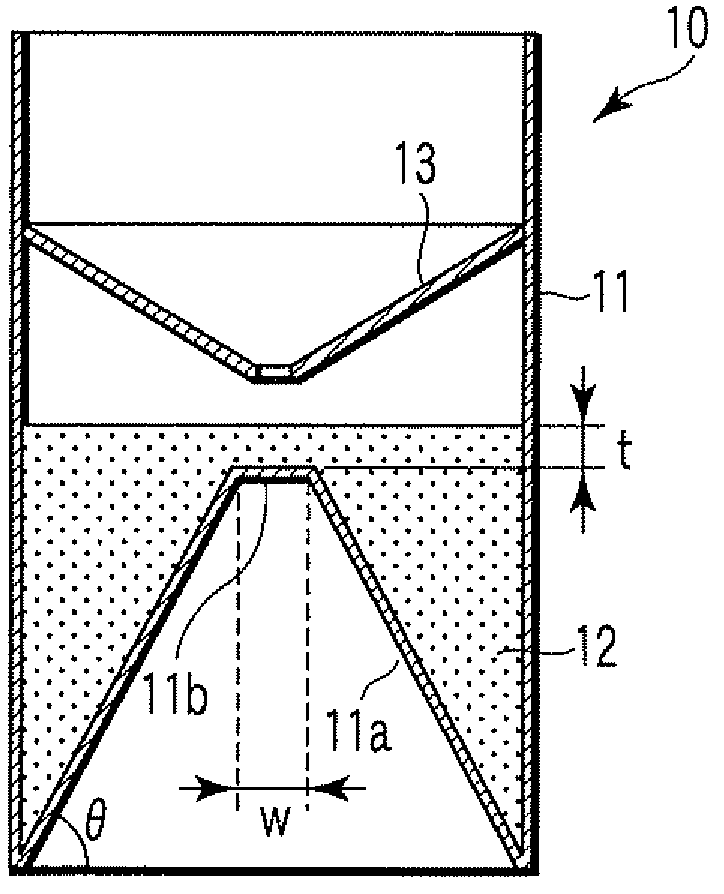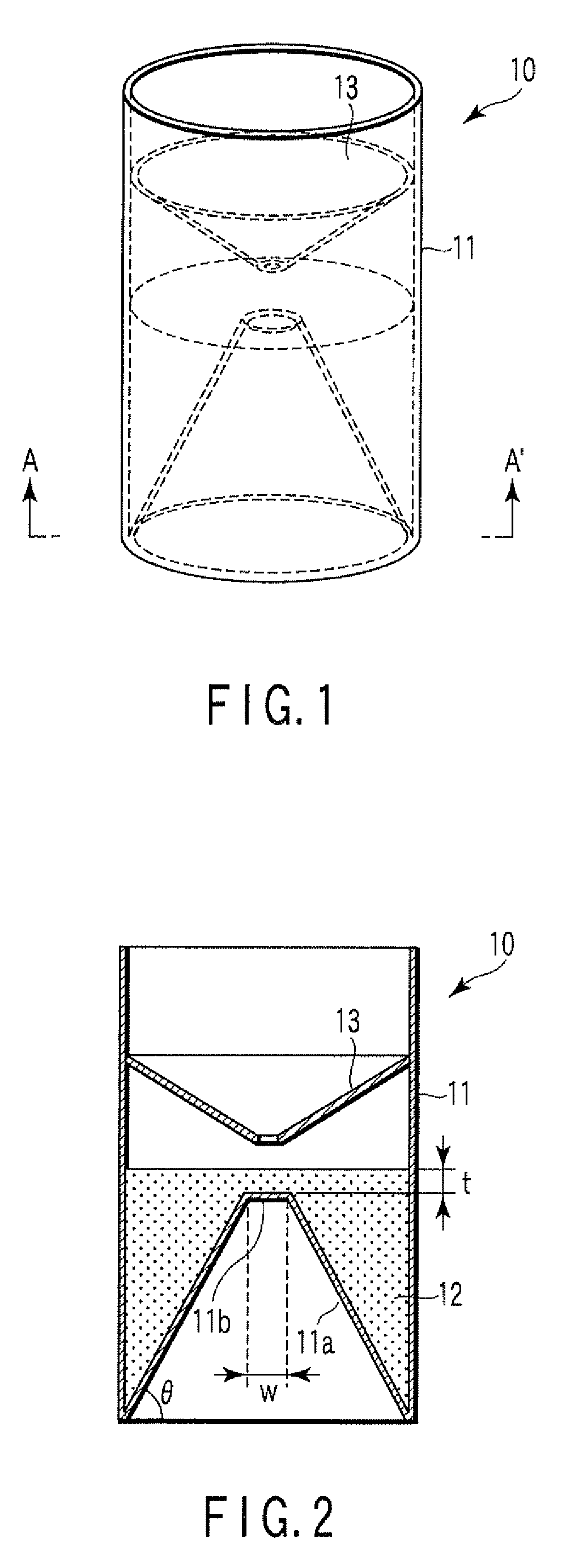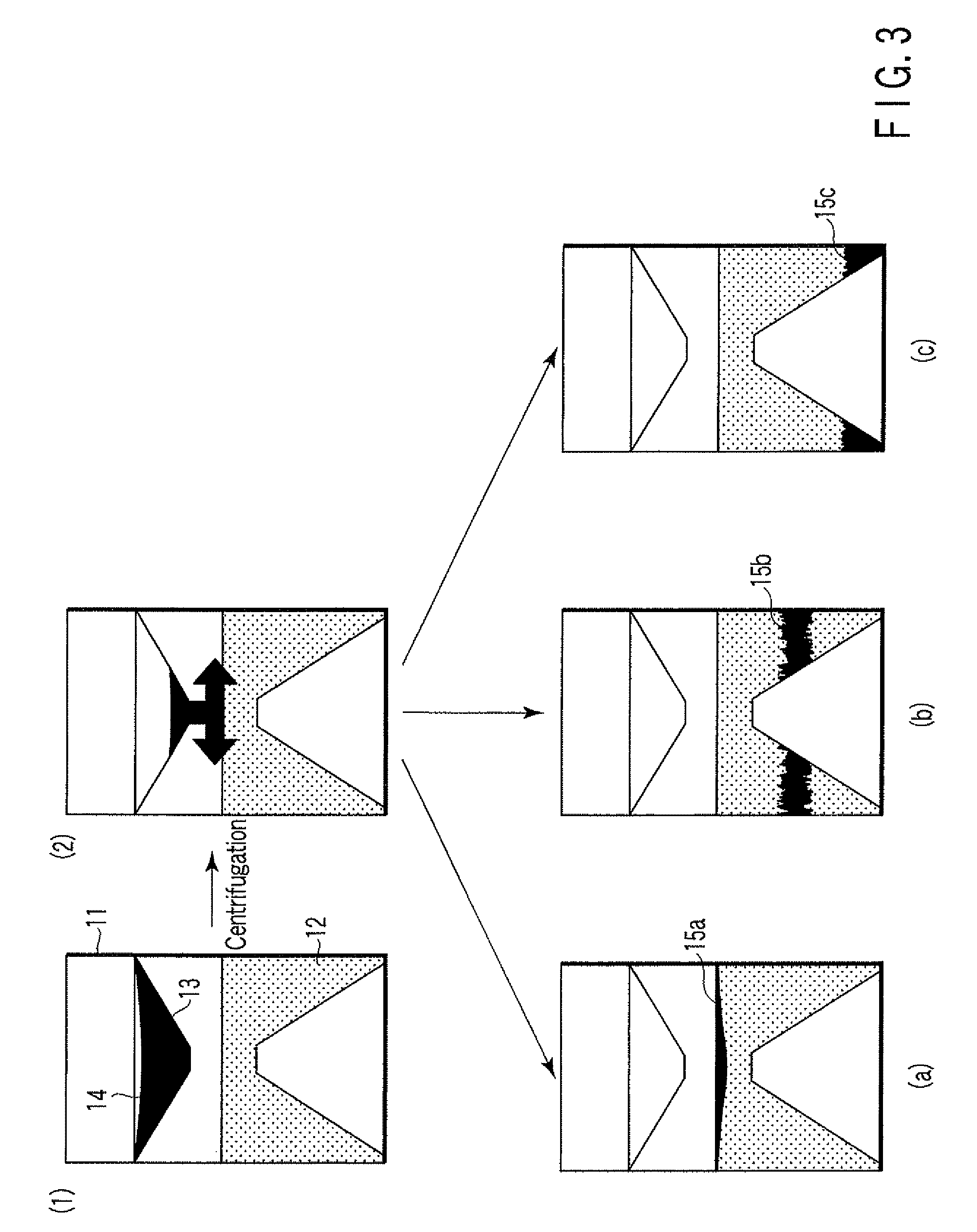Particle agglutination-evaluating container
a technology of agglutination and agglutination solution, which is applied in the field of particle agglutination evaluation containers, can solve the problems of troublesome operation, limited agglutination-capturing efficiency, and difficulty in identifying the intermediate reaction (weakly positive reaction) between the positive and negative reactions with the naked eye, and achieves the effect of easy and accura
- Summary
- Abstract
- Description
- Claims
- Application Information
AI Technical Summary
Benefits of technology
Problems solved by technology
Method used
Image
Examples
first embodiment
[0041]FIG. 1 is a perspective view illustrating a particle agglutination-evaluating container 10 according to the first embodiment of the present invention. FIG. 2 is a sectional view illustrating the particle agglutination-evaluating container 10 shown in FIG. 1, when cut along the line A-A′.
[0042]A transparent container main body 11 of the particle agglutination-evaluating container 10 is cylindrical in its external shape, and has a bottom face including a sloping bottom face 11a and a raised bottom face 11b extended horizontally at the top of the sloping bottom face 11a to form an obtuse angle with the sloping bottom face. The bottom face has an inverted-V shape of a truncated circular cone, and the raised bottom face 11b is a horizontal face. The transparent container main body 11 is filled with insoluble particles for separating agglutination particles depending on the degree of agglutination, forming therein a fluidal separation layer 12. The transparent container main body 11...
modified examples
[0063]Hereinafter, modified examples of the particle agglutination-evaluating container according to the first embodiment of the present invention will be described. In the modified examples, only the points different from the first embodiment of the present invention will be described.
[0064]A sectional view of a particle agglutination-evaluating container of modified example 1 is shown in FIG. 5 in which the flat raised bottom face in the first embodiment is replaced with a rounded raised bottom face. The rounded raised bottom face enables migration of negative unagglutinated particles toward the sloping bottom face without accumulation on the raised bottom face.
[0065]A sectional view of a particle agglutination-evaluating container of modified example 2 is shown in FIG. 6, in which the inverted-V shape of the truncated circular cone in the first embodiment is replaced with an inverted-U shape and the gradient angle of the sloping bottom face is changed to increase in the region cl...
PUM
| Property | Measurement | Unit |
|---|---|---|
| thickness | aaaaa | aaaaa |
| particle diameter | aaaaa | aaaaa |
| diameter | aaaaa | aaaaa |
Abstract
Description
Claims
Application Information
 Login to View More
Login to View More - R&D
- Intellectual Property
- Life Sciences
- Materials
- Tech Scout
- Unparalleled Data Quality
- Higher Quality Content
- 60% Fewer Hallucinations
Browse by: Latest US Patents, China's latest patents, Technical Efficacy Thesaurus, Application Domain, Technology Topic, Popular Technical Reports.
© 2025 PatSnap. All rights reserved.Legal|Privacy policy|Modern Slavery Act Transparency Statement|Sitemap|About US| Contact US: help@patsnap.com



